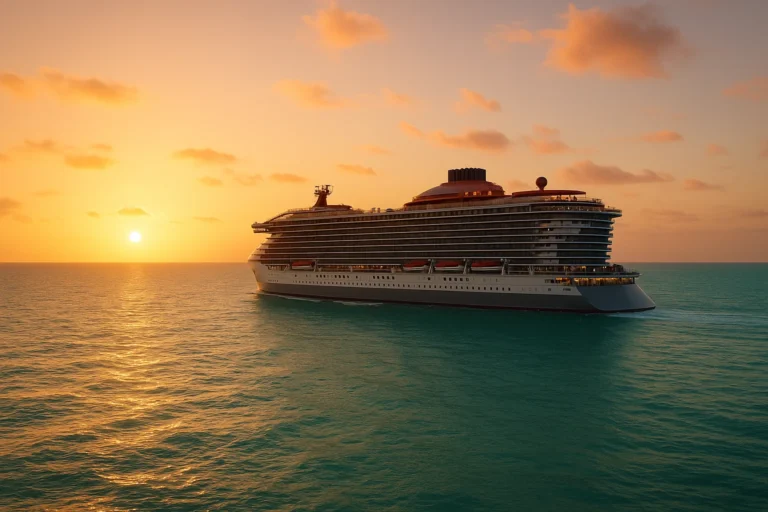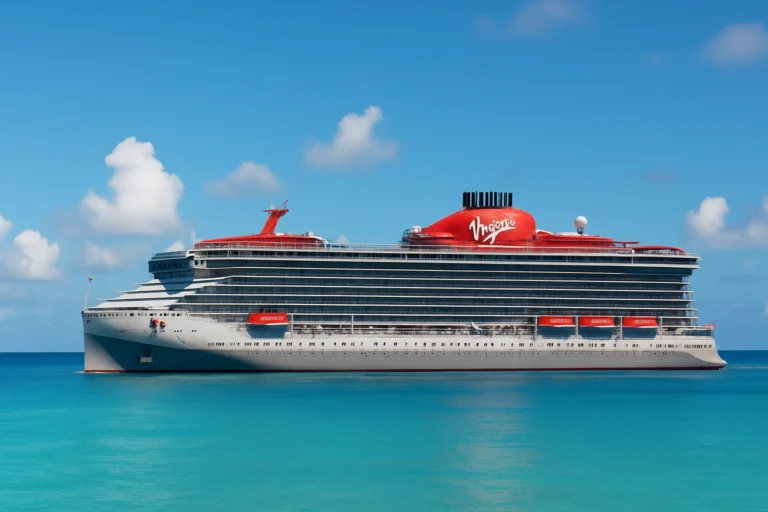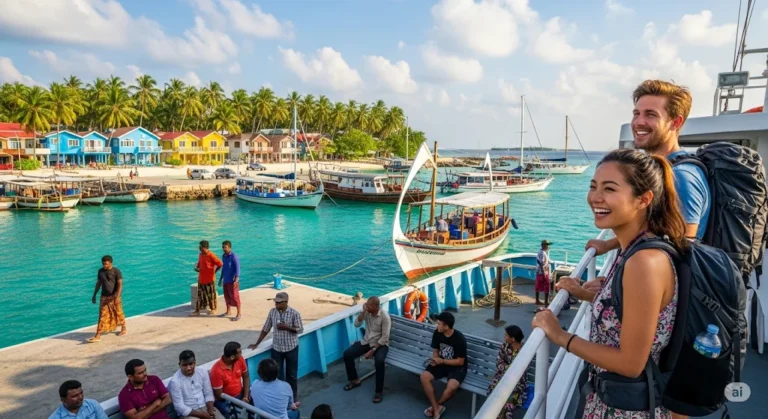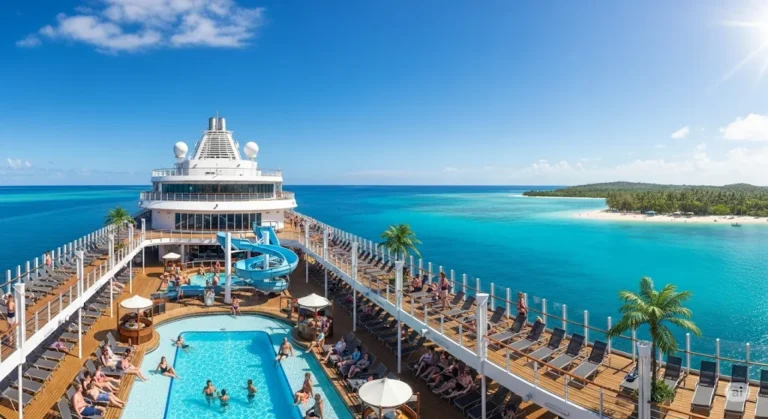What Documents Do I Need for a Royal Caribbean Cruise? (2025)
While we will provide detailed information, government requirements are subject to change. Always check the official Royal Caribbean Travel Documents Hub for the most up-to-date information for your specific sailing before you embark on your journey.
1. The Passport: The Undisputed “Gold Standard” of Cruise Travel 🛂
Every single guest is required to present an accepted form of identification to board the ship. For a majority of cruisers and destinations, a valid passport is not just recommended—it’s an absolute necessity. Royal Caribbean strongly advises all guests to present a passport as their form of ID, and for good reason.
a. Why a Passport is Your Best Friend at Sea
A passport is the hassle-free, universally accepted standard for international travel. Unlike other forms of ID, a passport’s validity is recognized by every country, making your journey seamless. Here’s a deeper look into its unparalleled benefits:
- Swift and Seamless Check-In: Passport holders generally experience a much faster check-in and disembarkation process, as customs officials can process your information more efficiently than with alternative documents.
- Global Safety Net: In the event of an emergency—such as a medical issue requiring you to be disembarked in a foreign port—a passport is your single most important document. Without it, re-entry to your home country or travel to another country for care can become a bureaucratic nightmare. It’s your vital safety net.
- Itinerary Protection: In rare cases, a ship’s itinerary might change due to weather or unforeseen circumstances. A passport allows you to enter any new country on the revised itinerary without issue, something not possible with a birth certificate.
b. The Six-Month Rule and Name Matching
It is crucial that your passport is valid for at least **six months after the last day of your cruise**. Many countries have this requirement for entry, and failure to comply can result in being denied boarding. Additionally, the name on your passport must match the name on your cruise reservation *exactly*. Minor discrepancies can cause major headaches, so double-check your booking details carefully.
2. Alternative Forms of Identification for Specific Itineraries 📝
For certain itineraries, particularly “closed-loop” cruises that begin and end in the same U.S. port, some guests may be able to use alternative documents. However, this is not a universal rule and comes with specific limitations.
a. U.S. Citizens: The Birth Certificate Option
U.S. citizens born in the United States may be able to present a state-certified birth certificate and a government-issued photo ID (like a driver’s license) on most closed-loop cruises from the U.S. However, it’s vital to understand the strict rules:
- Certification is Key: It must be an original, state-certified birth certificate. Documents such as hospital birth certificates, “baby feet” certificates, or photocopies are not accepted.
- Photo ID is Required: All guests 16 and older must also present a valid government-issued photo ID. The name on both the birth certificate and the ID must match perfectly.
- Age Exception: Guests 15 and under only need to present the original birth certificate; a separate photo ID is not required.
- Puerto Rican Birth Certificates: Any birth certificate from Puerto Rico issued prior to July 1, 2010, is not considered valid for travel.
b. Canadian Citizens: Special Provisions
Canadian citizens aged 14 and under may also present an original Canadian-issued birth certificate as their sole form of identification. No supplemental photo ID is required for these minors unless they are traveling with relatives or friends, in which case a notarized Travel Consent Form is required.
It’s important to stress that these exceptions are limited to very specific sailing conditions. A passport is the only document that guarantees hassle-free travel on any and all cruise itineraries.
3. The Name Game: What to Do in Case of Discrepancies 💍
The name on your reservation, your government-issued photo ID, and your passport or birth certificate must match exactly. This is a non-negotiable security and legal requirement. If your name has changed due to marriage, divorce, or any other legal reason, you will need to bring additional official documents to explain the difference. These can include:
- State, county or province-issued marriage license
- Official divorce decree
- Government-issued name change document
- Official adoption papers
If you are presenting a birth certificate and a separate government photo ID, the name on *both* of these documents must match each other, and they must both align with the reservation name. If they don’t, a supporting document is mandatory. Failure to provide this proof will result in denial of boarding without a refund.
4. Traveling with Children: Specific Requirements and Forms 👨👩👧👦
When traveling with minors, especially if you are not their legal guardian, the documentation requirements become even more strict. This is for the safety of the child and is a global standard for travel.
📂 Explore More in These Categories
Cruise Travel Tips – Expert Advice & Guides
a. ID for Minors and Different Last Names
For all itineraries, a child must have the required travel documents (e.g., a passport). If the child’s last name differs from the accompanying parent, you must bring official supporting documentation to explain the difference. This could be a birth certificate, a marriage license, or a divorce decree. The original document or a notarized copy is required.
b. The Notarized Minor Consent Form: A Crucial Step
When a minor (age 17 and under) travels without their legal guardian, the accompanying adult must present a **notarized Minor Consent Form**. This form, which can be downloaded from Royal Caribbean’s website, must be signed by the child’s legal guardian(s). It serves as legal consent for the child to travel and to participate in certain onboard activities that require a release form. It is the single most important document for anyone traveling with a child they are not the legal guardian of, be it a grandparent, aunt, or family friend.
5. Visas and Travel Authorizations: Your Responsibility to Verify 🌍
Beyond your passport, you must also consider the visa and travel authorization requirements for your nationality and your specific cruise itinerary. This is a critical and often overlooked part of cruise planning. It is solely the guest’s responsibility to identify and obtain all necessary visas before the cruise begins.
a. Contacting Embassies for Guidance
The best way to determine if you need a visa is to contact the Embassy (Consular Services) of each country your cruise visits. Visa requirements can change without notice, so it’s essential to check well in advance of your sailing. For a cruise to Asia, for example, a guest might need separate visas for Vietnam, Thailand, and China, depending on their nationality. A company that assists with securing and processing visas is a valuable resource for complex itineraries.
b. New Digital Travel Authorizations
In addition to traditional visas, many countries are now implementing electronic travel authorizations. For example, all visitors from certain nationalities must now obtain a **U.K. Travel Authorization (ETA)** to travel to the U.K. This is an electronic pre-screening process, and failure to have one can result in being denied entry. It’s crucial to stay informed about these new digital requirements for all ports of call on your itinerary.
6. The Boarding Process and Final Tips for Success ✅
Knowing what documents you need is one thing; ensuring you have them and present them correctly is another. Here are some final tips to ensure your boarding day is as smooth as possible.
a. The Check-in Flow at the Terminal
Upon arrival at the cruise terminal, you will be directed through a series of checkpoints. The first is a security check, similar to an airport. The second is the check-in desk, where a Royal Caribbean agent will meticulously review all your travel documents, including your passport or birth certificate and your cruise ticket. This is where any discrepancies will be found. Finally, a security photo will be taken, and you will be issued your SeaPass card, which is your key to everything on the ship.
b. Don’t Pack Your Docs!
This is a tip you’ll hear from every experienced cruiser: **do not pack your travel documents in your checked luggage!** Keep all passports, birth certificates, and supporting documents on your person at the terminal. You will need to present them at check-in, and your luggage will likely be sent to your stateroom well after you’ve boarded. A waterproof pouch or a travel wallet is an excellent way to keep these items organized and secure while you are in the terminal and throughout your trip.
c. Create a Back-up Plan
Before you leave home, make both physical and digital copies of all your travel documents. Store the digital copies securely on a cloud service or encrypted drive, and keep the physical copies in a separate, secure location from your originals. In the unlikely event that your original documents are lost or stolen, these copies can significantly expedite the process of getting a replacement from an embassy or consulate in a foreign port, a scenario where a passport is, once again, your only reliable option.
Disclaimer: This guide provides general information. Specific document requirements are subject to change by government authorities and vary by itinerary and guest nationality. We recommend checking the official Royal Caribbean website for the most up-to-date information for your specific sailing.









